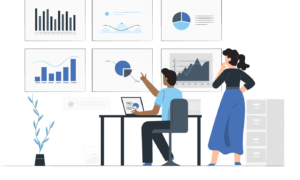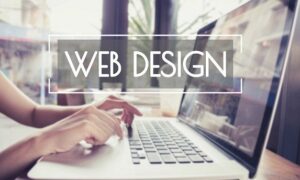Creating a business website opens doors to new opportunities, but only if you market it correctly. Many entrepreneurs focus too much on producing content and increasing site traffic. But it’s essential to consider the different elements of your site that could impact your site visitors’ behavior.
Denis Pakhaliuk is a branding and web development specialist. At his company, Ramotion, his team creates landing pages and marketing websites with a particular emphasis on conversions and storytelling. Having worked with both startups and large corporations, Denis says that businesses of all sizes can benefit immensely from a comprehensive web design approach and process.
Web design approach
The designers at Ramotion consider marketing websites a crucial tool for a brand to convey its story. This helps in giving a brand a more personal vibe, making it more relatable to end-customers. The designers believe that every marketing website should have a tone that carries the brand’s voice and resonates with the target audience.
The web design approach from Ramotion involves applying key brand identity elements that reflect strategic goals, the state of the brand, and the client’s aspirations for the future. The web developers sit down with the clients and thoroughly discuss their plans before starting the design process.
Web design process
Ramotion follows an extensive web design process to cover all the essential elements of a marketing website.
1) Discovery
This stage involves gathering requirements, such as critical use cases, current pain points, industry best practices, business goals, competitive analysis, and user personas.
2) Audit
The designers evaluate the opportunities they can exploit, analyze equality, check WCAG 2.0 accessibility, and monitor takeaway synthesis.
3) Website structure
After analyzing all the above elements, the designers would get into the website map, information architecture, and write the website copy according to the IA and verbal identity.
4) Layout design
They brainstorm at least 2 to 3 concepts they can use for web pages, develop mood boards and visual positioning, shortlist high-fidelity wireframes, and use interactive prototype wherever applicable.
5) Visual design
They first visualize how the website would look before proceeding to the actual design phase. This also helps develop efficient and straightforward codes that the client may be able to tweak later on.
6) HTML and CSS development
Next, they implement the content of the pages in CMS. They also develop web pages according to the visual design.
7) Visual content
This includes illustrations, iconography, and photography style that makes the website look visually attractive and engaging.
8) Integrations
Depending on the client’s requirements, the designers also add third-party integrations like CRM, A/B testing tools, and analytics.
Why is web design from Ramotion different?
Ramotion’s web design process reflects their client’s visual identity, verbal identity, and brand strategy. Developing a marketing website with thoughtful consideration of user experience and brand recognition can make a massive difference in customer generation and retention.
Taking the set-it-and-forget-it approach inevitably leads to falling short of expectations. Ramotion recommends actively promoting your marketing website and exploring new ways to enhance the user experience it delivers.


































